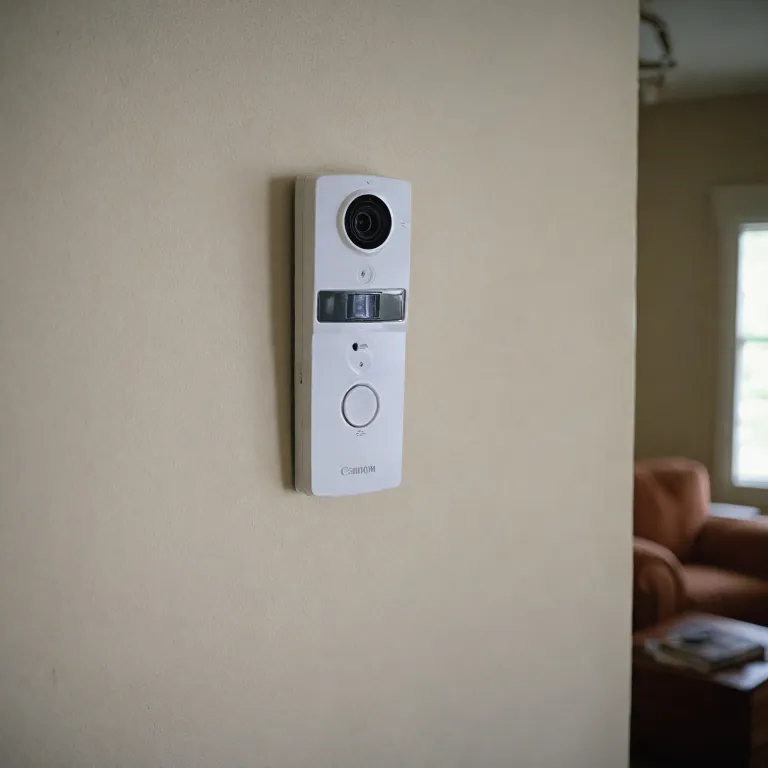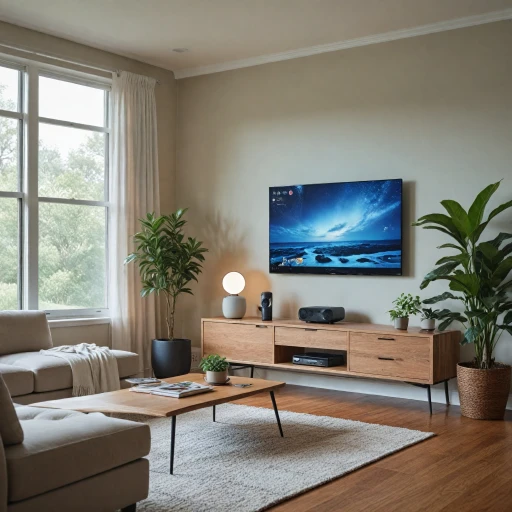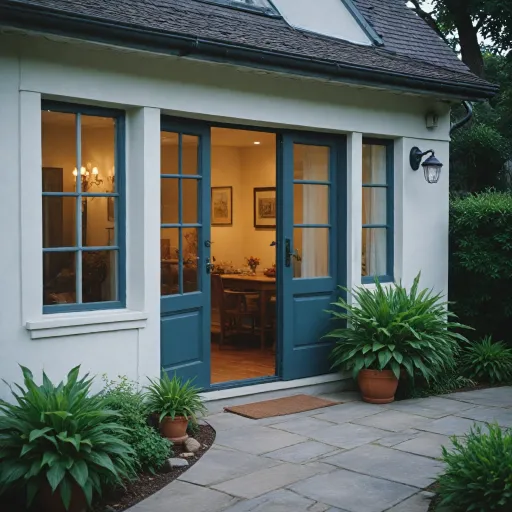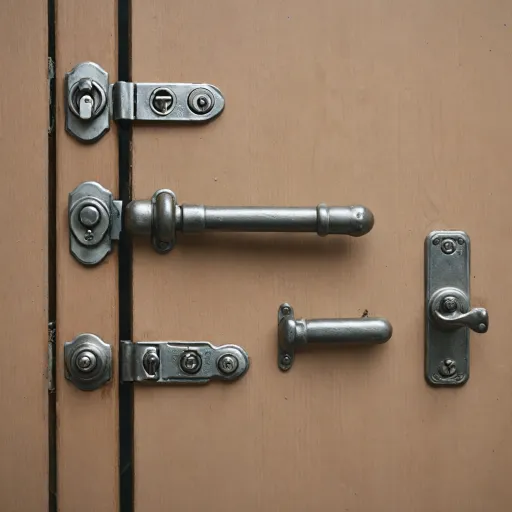
Understanding Z-Wave Technology
Exploring the Benefits of Z-Wave Technology
Z-Wave technology is increasingly becoming a staple in smart home integration, particularly enhancing home security with its seamless connectivity features. Unlike other wireless communication protocols, Z-Wave operates on a low-power radio frequency, enabling smart home devices to communicate efficiently over long-range distances. For those not familiar with Z-Wave, it’s best imagined as the invisible thread connecting your security devices, providing a harmonious home environment that is both safe and intelligent. The Z-Wave ecosystem consists of a mesh network that links various devices such as motion sensors, water leak detectors, and smart light controls. The flexibility of Z-Wave technology allows for the integration of a wide array of devices—from the ecolink wave motion detector to pet-immune sensors, and even door-window units. This interoperability means users can tailor their home security setup without the limitations that other technologies might impose, ensuring each device complements the other efficiently. Leveraging Z-Wave technology, the smart home user can create a custom security protocol that ensures comprehensive coverage. For example, pairing Z-Wave motion detectors with your existing smart ecosystem can optimize how your system detects intrusions, senses water leaks, or even updates regular sensor reviews for constant security assurance. If you're interested in discovering more about smart home integration, enhancing home security with the Qolsys IQ Panel 4 can provide further insights on harnessing technology for maximum protection.Why Choose a Z-Wave Motion Detector?
Why Opt for Z-Wave Motion Detection Technology?
Choosing a Z-Wave motion detector for your home security system has several benefits, making it a smart investment for those looking to enhance safety and peace of mind. Here's why you might consider opting for this technology:- Reliability and Flexibility: Z-Wave offers a robust and flexible framework for your motion sensors, such as the popular Ecolink wave models. Known for their reliable performance, these sensors adapt well to a variety of home sizes and layouts.
- Integration Capabilities: Z-Wave technology allows motion detectors to communicate seamlessly with a range of other smart home devices. This means your sensors can link up with smart lights or door locks, providing greater control over your security ecosystem.
- Energy Efficiency: Often featuring energy-efficient designs, Z-Wave units are optimized to minimize power consumption without sacrificing performance. This efficiency can contribute to long-term savings on energy costs.
- Affordability and Scalability: With various models available, ranging from basic motion detectors to advanced units with pet immunity and long-range capabilities, there is a Z-Wave sensor to suit nearly any budget. Plus, these systems are easily scalable, allowing for future expansion.
- Response and Detection: Z-Wave motion detectors, equipped with PIR motion sensors, provide accurate detection by monitoring infrared waves, ensuring prompt alerts to any unusual activity. The units are designed to minimize false detections, even in environments with pets.
Key Features to Look for in a Z-Wave Motion Detector
Important Aspects to Consider
When selecting a Z-Wave motion detector, a few key features can make all the difference in enhancing your home security system.- Detection Range and Angle: A long range motion detector ensures that wide areas are monitored, providing reliable coverage for larger spaces. Look for detectors with a wide detection angle to maximize security.
- Compatibility with Z-Wave Ecosystem: Opt for devices that integrate seamlessly with other Z-Wave components, such as Ecolink Wave detectors or wave long range sensors, to build a smart networked home.
- Pet Immunity: If you have pets, consider pet immune detectors to prevent false alarms, ensuring only real intrusions trigger alerts.
- PIR Motion Sensor: Passive Infrared (PIR) technology is crucial for accurate motion detection, reducing false positives and enhancing reliability.
- Water and Environmental Sensors: Some units offer sensors water and water leak detection, providing an additional layer of safety against potential home hazards.
- Ease of Installation: Seek motion detectors with straightforward installation processes. Sometimes, hiring a professional can ensure the unit is optimally placed for best performance.
- Adjustable Sensitivity: The ability to control sensor sensitivity is vital for adapting to various environments and minimizing unwanted alerts.
Integrating these features into your system not only enhances detection capabilities but also augments it with other smart devices. Curious to see how this setup extends to window security? Consider visiting this resource on securing basement windows for more insights.
Installation Tips for Optimal Performance
Effective Setup Strategies for Motion Detectors
When incorporating a Z-Wave motion detector into your home security ecosystem, proper installation is vital to ensure accurate sensor activity and reliable long-range detection. This guide will help you optimize the performance of your motion detector unit, whether you're using models like the Ecolink Wave or other popular motion detection systems.- Placement Matters: To capitalize on the Z-Wave's pet immune technology and minimize false triggers, position the motion sensor at an optimal height—not exceeding 7 feet. Depending on the PIR motion detection capabilities, it's advisable to place sensors in high-traffic areas such as near entry points like doors and windows.
- Avoid Direct Light Sources: Direct exposure to light sources, like lamps or windows with intense sunlight, can cause false alarms or inconsistent performance. Ensure that the wave motion detector does not face ambient lighting directly, helping to maintain the integrity of the detection capabilities.
- Calibrate Sensitivity Settings: Take advantage of the smart technology within your unit by adjusting the sensitivity settings. This adjustment is crucial when you have pets. Properly calibrated settings can differentiate between the movements of a pet and a potential intruder, effectively utilizing the device’s pet immune features.
- Mapping Detection Zones: For homes with Ecolink wave sensors or similar models, configuring tailored detection zones can optimize performance. Focus on areas that typically require more security monitoring, bypassing inactive zones to reduce unnecessary activity logs.
- Regular Maintenance Tips: Clean the lens regularly to ensure maximum sensor clarity and accuracy. Periodic reviews of the functionality of the unit are crucial, particularly following a water leak in sensitive areas that could affect the detector's performance.
- Considering Environmental Factors: Evaluate environmental conditions when you install your wave long range sensors. Erratic temperatures or fluctuating humidity in certain areas, like close to water sources, can affect sensor gen performance, necessitating strategic placement away from such influences.
Integrating with Other Smart Home Devices
Connecting Your Motion Detector with Other Smart Home Devices
Integrating your Z-Wave motion detector with other smart home devices can significantly enhance your home security system. The seamless communication through Z-Wave technology allows you to control multiple devices from one centralized hub, making your home not only safer but also more convenient. First and foremost, compatibility is key. Ensure that your motion detector and other devices, such as smart lights, PIR motion sensors, door and window sensors, and water leak detectors, are all Z-Wave-enabled. This guarantees that every unit communicates effectively within the ecosystem, allowing for automation sequences like turning on your ecolink wave light when motion is detected. Z-Wave technology isn't just for indoors. Consider adding outdoor wave long range sensors to cover more ground. This extended reach helps in monitoring larger areas and can initiate actions automatically, such as alerting you of any detected movements around the perimeter of your home. Furthermore, many Z-Wave motion detectors, including the popular Ecolink motion detectors, offer pet immunity features, which means your sensor can distinguish between a moving person and a pet, preventing false alarms. For a truly integrated system, you might want to look into combining your Z-Wave devices with Zigbee-compatible units. Some systems allow this dual compatibility, giving you access to an even larger variety of sensors and controls. Finally, remember the benefits of a smart control setup. Using a gen wave sensor in conjunction with a control panel allows for centralized management of your home security system. This setup often includes mobile app controls, enabling you to receive alerts and manage your system remotely, offering peace of mind whether you're at home or away. Whether it’s for everyday convenience or additional protection, integrating your Z-Wave motion detectors with other smart home devices creates a cohesive and efficient home security system. Make sure to check reviews and price options for the best unit that fits your needs, especially during a price sale or if you're comparing the unit price with the regular price.Troubleshooting Common Issues
Tackling Troubles: Maintaining Optimal Functionality
Your Z-Wave motion detector is designed to enhance your home's security, but like any technology, it might encounter issues. To ensure it operates at peak performance, follow these troubleshooting steps:- Examine Power Sources: If your sensor isn’t working, first check the power supply. Some units run on battery, while others may require an electrical connection. Confirm the battery or power cable is properly secured and consider keeping spare batteries in case they run out unexpectedly.
- Inspect Sensor Placement: Make sure your wave motion sensors are placed optimally. Interference from light, doors, or other objects can impact performance. Ensure that the detectors are not obstructed and are positioned at optimal heights for accurate motion detection.
- Verify Connectivity: If the motion sensor isn’t communicating with your smart home system, check if it’s connected to the Z-Wave network. Sometimes a device may need to be re-added to the network or relocated closer to its hub, especially if you’re using long-range wave sensors.
- Review Device Compatibility: Ensure your smart home devices are compatible with your Z-Wave motion detector. This includes cross-checking the technology standards (like Gen wave vs. sensor zigbee) to avoid conflicts. If compatibility issues arise, consulting the product’s manual or customer reviews can provide guidance.
- Run System Diagnostics: Many smart home systems offer diagnostic tools to identify issues. Use these tools to conduct a complete system check. Addressing software glitches or updating firmware can often resolve unexplained issues.
- Manage Environmental Factors: Changes in temperature or humidity, such as those around water or pet-occupied areas, can affect sensor performance. Adjusting sensor parameters or calibrating their sensitivity might be necessary to account for these changes.













